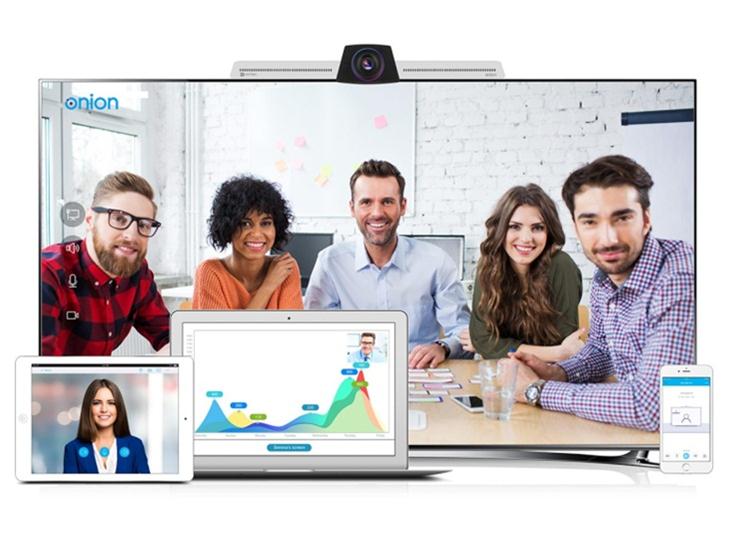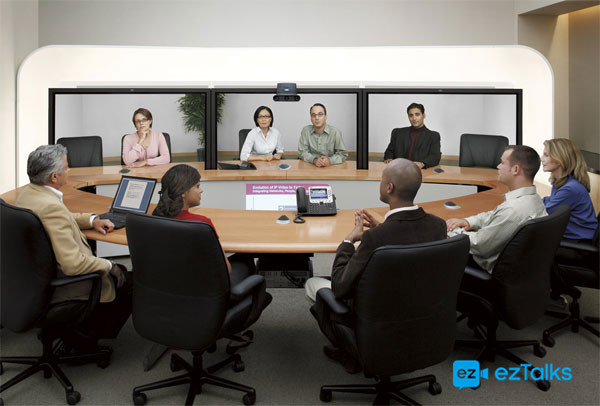Video Communication: All You Want to Know

The use of video communication has grown exponentially over the past decade, especially in the business sector. Many companies are using this form of technology to connect employees working in different locations all over the world. That inspires cross collaboration among company workers, which leads to better performance and improved growth. A business can also use video communication to establish a real-time connection with clients, suppliers and partners. It's basically something that any business, regardless of its size, should adopt.
What Is Video Communication?
Video communication refers to the transmission of information via live video streaming or through video sharing. With this form of communication, information senders and recipients are able to interact using both audio and video. In order to establish connection, users might require internet, video communication equipment and/or special software. The benefit of using video communication over other forms is that it offers a more real-time and face-to-face on screen interaction. With this technology, users can easily connect with family, friends or colleagues from work.Different Types of Video Communication
1. Video Calling
Video calling refers to a service where two or more people can communicate through video using their phone or PC. Those interacting via this type of call can basically see and hear one another while conversing. Video calling assumes three main forms namely: on-landline network, mobile, and internet.
-On-Landline Network: This mode of video communication can happen between two PC's using the same internet platform or between PC and landline number. PC to PC communication service is available for free for users of services like Skype and Facebook Messenger. Video calling service is only charged when one uses a PC to place a video call to a mobile or landline number. The charges raised by telecom operators are usually for interconnecting to their network. Hence the users of the network have to be billed for the time they are on call.
-Mobile Network: Video calling is not only limited to computers and landline phones. Today, people can make video calls using 3G and 4G mobile phones. 3G phones use a protocol referred to as H324M, which adopts the Circuit Switched Mode to function. Most 4G mobile devices utilize Packet Switched Mode protocol, which does not limit bandwidth. That makes the video quality of the latter to be of higher quality compared to the former. Most 3G and 4G handsets actually have features that support video calls to any contacts in the phone.
-Internet: Making a video over the internet using this option can either use Session Initiation Protocol (SIP) or H323 protocol. Communication is purely established on the internet. Different hardware and software can be used to connect communicators via a VoIP service. Mobile phone users can also utilize video call apps to interact with friends, family or workmates. Some of the popular mobile apps used to make video calls include FaceTime, Skype, Google Hangouts, WhatsAp and more.
2. Video Conferencing
Video conferencing is a form of communication where two or more people can share a live, visual connection from different locations. Every meeting participant can view other people on a grid with multiple screens simultaneously. Video conferencing is mostly used in business and education sectors to share information with people from multiple locations. Beyond business and education, video conferencing is increasingly vital in healthcare. For example, custom telemedicine solutions by ScienceSoft enable doctors to connect with patients remotely for consultations, monitoring, and treatment coordination. But how does this technology work? It's pretty simple. A video stream from each participant is first transmitted to a Multipoint Control Unit (MCU). At the MCU, several streams are selected, combined and sent to all participants as a single audio and video stream. That means all meeting attendees can get live video feeds as if they were interacting with the other participants in the real world. This form of communicatio is especially important for remote and new businesses teams who need to touch base from time to time.
Video conferencing may also assume a decentralized system, where all meeting attendees can enjoy video communication, without going through the central unit. It's more like each participant calling one another interchangeably. The advantage of using this form of video conferencing is that it guarantees a high-quality video. However, the fact that it uses more bandwidth to provide video streaming means users will spend more on data.
Another type of video communication that has become popular in the market is cloud-based video conferencing. This technology delivers high-quality video when full HD cameras are used in conferencing. One of the unique aspects about cloud video conferencing is that there's no fixed hardware required. Everything is stored in a central location, where access from anywhere can be easier. There are lots of popular cloud video meeting software in the market today, like Webex, Zoom, Bluejeans, ezTalks, etc. Apart from face-to-face communication, the software comes with screen sharing, application sharing, whiteboards as well as meeting recording & playback capabilities.
3. Telepresence
Telepresence is an advanced form of video conferencing that allows for real-life simulation, where participants of a meeting feel as if they were physically talking with one another. Participants can establish eye contact and interact on a personal level. For telepresence to work successfully, users need specially designed cameras and LCD screens. Seating arrangements must also be unique i.e. curved seating where people from both ends of the conference can see each other directly. Sound and visual are transmitted in clear HD format, which makes a meeting sound more lifelike. Telepresence is mostly used by companies to hold corporate meetings with employees or link with clients, suppliers and partners from all over the world.

4. Video Sharing
Most video conferencing technologies offer users the option of sharing videos during presentations. With this feature,meeting participants can be able to view what the presenter has shared in real-time. That’s made possible with the packet data connection which works in line with the voice call. Sharing of videos on this platform is instant and all meeting attendees can see the video files simultaneously.
Conclusion
These are some of the main forms of video communication that can be ideal for individual or business use. Each of them has its own unique benefits but also comes with a set of drawbacks as well. That means one has to consider the strengths of each mode and compare to see whether it matches his/her own communication needs. But what matters is finding a form of video communication that's flexible,reliable and cost-effective. While comparing or shopping around,it might also be important to consider the newest technologies of online communication. That's because they tend to offer high-quality video streaming, seamless video communication and more lifelike face-to-face interaction.